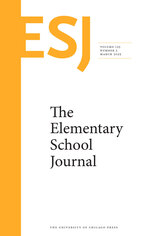7 books about Ten Design Principles
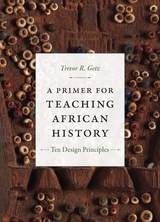
A Primer for Teaching African History
Ten Design Principles
Trevor R. Getz
Duke University Press, 2018
A Primer for Teaching African History is a guide for college and high school teachers who are teaching African history for the first time, for experienced teachers who want to reinvigorate their courses, for those who are training future teachers to prepare their own syllabi, and for teachers who want to incorporate African history into their world history courses. Trevor R. Getz offers design principles aimed at facilitating a classroom experience that will help students navigate new knowledge, historical skills, ethical development, and worldviews. He foregrounds the importance of acknowledging and addressing student preconceptions about Africa, challenging chronological approaches to history, exploring identity and geography as ways to access historical African perspectives, and investigating the potential to engage in questions of ethics that studying African history provides. In his discussions of setting goals, pedagogy, assessment, and syllabus design, Getz draws readers into the process of thinking consciously and strategically about designing courses on African history that will challenge students to think critically about Africa and the discipline of history.
[more]
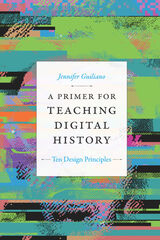
A Primer for Teaching Digital History
Ten Design Principles
Jennifer Guiliano
Duke University Press, 2022
A Primer for Teaching Digital History is a guide for college and high school teachers who are teaching digital history for the first time or for experienced teachers who want to reinvigorate their pedagogy. It can also serve those who are training future teachers to prepare their own syllabi, as well as teachers who want to incorporate digital history into their history courses. Offering design principles for approaching digital history that represent the possibilities that digital research and scholarship can take, Jennifer Guiliano outlines potential strategies and methods for building syllabi and curricula. Taking readers through the process of selecting data, identifying learning outcomes, and determining which tools students will use in the classroom, Guiliano outlines popular research methods including digital source criticism, text analysis, and visualization. She also discusses digital archives, exhibits, and collections as well as audiovisual and mixed-media narratives such as short documentaries, podcasts, and multimodal storytelling. Throughout, Guiliano illuminates how digital history can enhance understandings of not just what histories are told but how they are told and who has access to them.
[more]
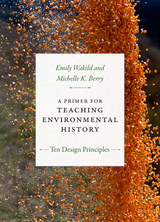
A Primer for Teaching Environmental History
Ten Design Principles
Emily Wakild and Michelle K. Berry
Duke University Press, 2018
A Primer for Teaching Environmental History is a guide for college and high school teachers who are teaching environmental history for the first time, for experienced teachers who want to reinvigorate their courses, for those who are training future teachers to prepare their own syllabi, and for teachers who want to incorporate environmental history into their world history courses. Emily Wakild and Michelle K. Berry offer design principles for creating syllabi that will help students navigate a wide range of topics, from food, environmental justice, and natural resources to animal-human relations, senses of place, and climate change. In their discussions of learning objectives, assessment, project-based learning, using technology, and syllabus design, Wakild and Berry draw readers into the process of strategically designing courses on environmental history that will challenge students to think critically about one of the most urgent topics of study in the twenty-first century.
[more]

A Primer for Teaching Indian Ocean World History
Ten Design Principles
Edward A. Alpers and Thomas F. McDow
Duke University Press, 2024
A Primer for Teaching Indian Ocean World History is a guide for college and high school educators who are teaching Indian Ocean histories for the first time or who want to reinvigorate their courses. It can also serve those who are training future teachers to prepare their own syllabi, as well as those who want to incorporate Indian Ocean histories into their world history courses. Edward A. Alpers and Thomas F. McDow offer course design principles that will help students navigate topics ranging from empire, geography, slavery, and trade to mobility, disease, and the environment. In addition to exploring non-European sources and diverse historical methodologies, they discuss classroom pedagogy and provide curriculum possibilities that will help instructors at any level enrich and deepen standard approaches to world history. Alpers and McDow draw readers into strategically designing courses that will challenge students to think critically about a vast area with which many of them are almost entirely unfamiliar.
[more]
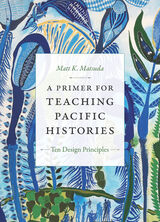
A Primer for Teaching Pacific Histories
Ten Design Principles
Matt K.Matsuda
Duke University Press, 2020
A Primer for Teaching Pacific Histories is a guide for college and high school teachers who are teaching Pacific histories for the first time or for experienced teachers who want to reinvigorate their courses. It can also serve those who are training future teachers to prepare their own syllabi, as well as teachers who want to incorporate Pacific histories into their world history courses. Matt K. Matsuda offers design principles for creating syllabi that will help students navigate a wide range of topics, from settler colonialism, national liberation, and warfare to tourism, popular culture, and identity. He also discusses practical pedagogical techniques and tips, project-based assignments, digital resources, and how Pacific approaches to teaching history differ from customary Western practices. Placing the Pacific Islands at the center of analysis, Matsuda draws readers into the process of strategically designing courses that will challenge students to think critically about the interconnected histories of East Asia, Southeast Asia, Australia, the Pacific Islands, and the Americas within a global framework.
[more]
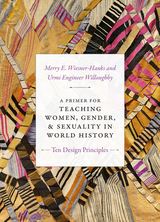
A Primer for Teaching Women, Gender, and Sexuality in World History
Ten Design Principles
Merry E. Wiesner-Hanks and Urmi Engineer Willoughby
Duke University Press, 2018
A Primer for Teaching Women, Gender, and Sexuality in World History is a guide for college and high school teachers who are teaching women, gender, and sexuality in history for the first time, for experienced teachers who want to reinvigorate their courses, for those who are training future teachers to prepare their own syllabi, and for teachers who want to incorporate these issues into their world history classes. Merry E. Wiesner-Hanks and Urmi Engineer Willoughby present possible course topics, themes, concepts, and approaches while offering practical advice on materials and strategies helpful for teaching courses from a global perspective in today's teaching environment for today's students. In their discussions of pedagogy, syllabus organization, fostering students' historical empathy, and connecting students with their community, Wiesner-Hanks and Willoughby draw readers into the process of strategically designing courses that will enable students to analyze gender and sexuality in history, whether their students are new to this process or hold powerful and personal commitments to the issues it raises.
[more]
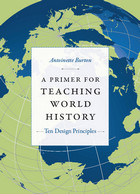
A Primer for Teaching World History
Ten Design Principles
Antoinette Burton
Duke University Press, 2012
A Primer for Teaching World History is a guide for college and high school teachers who are designing an introductory-level world history syllabus for the first time, for those who already teach world history and are seeking new ideas or approaches, and for those who train future teachers to prepare any history course with a global or transnational focus. Drawing on her own classroom practices, as well as her career as a historian, Antoinette Burton offers a set of principles to help instructors think about how to design their courses with specific goals in mind, whatever those may be. She encourages teachers to envision the world history syllabus as having an architecture: a fundamental, underlying structure or interpretive focus that runs throughout the course, shaping students' experiences, offering pathways in and out of "the global," and reflecting the teacher's convictions about the world and the work of history.
[more]
READERS
Browse our collection.
PUBLISHERS
See BiblioVault's publisher services.
STUDENT SERVICES
Files for college accessibility offices.
UChicago Accessibility Resources
home | accessibility | search | about | contact us
BiblioVault ® 2001 - 2025
The University of Chicago Press



